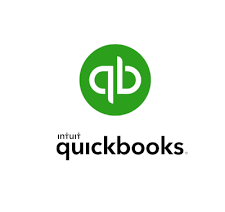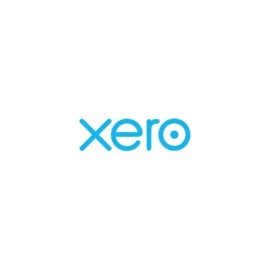
Whether you’re a freelancer working from home or a Fortune 500 enterprise with 100,000 global employees, recording financial business transactions is fundamental to your potential for success. But out of the dozens of software options on the market, which one is the best for your business?
Speaking broadly, Intuit QuickBooks Online is the best accounting software for many small businesses — potentially yours as well. However, if QuickBooks doesn’t have the starting price or features you’re looking for, an option like Xero, Wave or Zoho could work for you instead.
Below, we break down the six best accounting software platforms for small businesses by features, pricing, pros and cons.
Jump to:
Plan details are up to date as of 6/2/2023.
*Unlimited users are available with the advanced plan only. The basic plan is limited to one user.
Are you a new small-business owner buying accounting software for the first time? If so, it’s important to know which baseline features are included with any worthwhile accounting software. You can safely assume that the best accounting software providers offer the following basic features:
All accounting software should also include an option to share with your accountant, preferably at no additional cost. We don’t recommend using accounting software that doesn’t meet the minimum requirement of offering the essential tools listed above.
Intuit QuickBooks Online is a fully featured, double-entry online accounting system that can be adapted to fit just about any small business. The software platform provides extraordinary levels of help and support, ranging from basic online tutorials to personal consultations with professional bookkeepers.
While QuickBooks Online’s more expensive plans have enough features for enterprise-level accounting, it also helps small businesses by shielding them from bookkeeping and financial transaction jargon. This user-friendliness means just about any business owner, regardless of their financial accounting acumen, can benefit from QuickBooks’ accounting software.
QuickBooks Online has one of the highest starting prices of any accounting software provider. As a point in its favor, though, QuickBooks does clearly list the price of each plan online, which isn’t true for all accounting software companies.
As a first-time QuickBooks customer, you can choose to explore QuickBooks without committing to a plan by signing up for a 30-day free trial. You can also skip the free trial in favor of locking in 50% off for your first three months.
Along with the typical accounting features listed above, QuickBooks Online offers the following accounting tools with each plan:
More expensive QuickBooks Online plans include bill pay, time tracking, inventory management, profitability forecasting by project, batch invoicing and more.

FreshBooks’ invoice-centric accounting plan focuses on features for freelancers who provide services rather than freelancers who sell products. Its collaboration tools include a client portal where FreshBooks users can interact with their customers, easily sending estimates, invoices and payment reminders.
While FreshBooks’ invoicing features make it best for freelancers, its mid-tier plan can support midsize businesses and its custom plan works for smaller enterprises located in the U.S.
FreshBooks has four accounting plans, including one geared toward freelancers, two for small and midsize businesses, and one for enterprises:
FreshBooks’ frequent discounts and sales make it a much more affordable option than QuickBooks for first-time business owners and budget-conscious freelancers. You can also lock in a 10% discount by paying for a plan yearly instead of month to month.
FreshBooks’ most unique feature is its attention to invoicing. Its professional invoicing templates are easy to create, customize and share with clients. Users can also use FreshBooks to track time and expenses and then sync that data to an invoice to ensure they’re paid accurately for their time. Invoices can be made recurring for recurring customers, and FreshBooks’ users can also schedule automatic charges for overdue invoices and automatic late-payment reminders.
FreshBooks’ other accounting features include the following:
SEE: 8 best enterprise accounting software for 2023 (TechRepublic)

Like FreshBooks, Xero targets freelancers and solopreneurs who want easy invoicing tools and straightforward online payment acceptance features. Unlike FreshBooks and QuickBooks, though, Xero includes inventory tracking with every plan, which makes it a solid solution for product-based businesses that need to track products and finances simultaneously.
Xero has three scalable plans to support businesses as they grow:
Every Xero plan, even the cheapest, allows you to add unlimited users at no additional fee.
Along with unlimited users, bill pay features, invoicing and inventory management, Xero offers these bookkeeping tools:
Businesses that choose Xero’s Established plan can also approve and reimburse expenses, get 90-day forecasts for cash flow and profitability, accept multi-currency payments and track projects.

Wave Accounting is a free bookkeeping solution that includes unlimited invoicing, expense tracking, bank reconciliation and basic reporting. Wave Accounting integrates with Wave’s payroll solution, Wave Payroll, which does cost a monthly fee. However, if you don’t have any employees, you won’t pay anything to track your finances and cash flow using Wave Accounting.
In addition to offering paid payroll processing, Wave provides paid options for personalized bookkeeping services and business coaching. Payment for these support services varies depending on time and the level of required expertise. Wave may be a good option for more financially savvy individuals who do not require support services.
You can sign up for Wave Accounting free of charge. A credit card number isn’t required to sign up; the software will remain free however long you use it.
While there isn’t a cost to integrate Wave Accounting with Wave Payroll, Wave Payroll itself is a paid service with two main plans:
Through Wave Accounting, you can access the following features for free:

Sage accounting software has been available in some form since the 1980s, so the company and its platform have a long history. Sage emphasizes that experience as a provider for potential customers. Besides accounting tools, the Sage platform also includes data visualizations and other comprehensive dashboard reports. These features give Sage Business Cloud Accounting an edge over many competitors, at least for customers who want comprehensive datasets.
Sage Business Cloud Accounting has only two plans:
Sage typically offers a 30-day free trial. It also has frequent sales that apply only to its more advanced plan. Discounts can be as deep as 70% for six months, which lowers the annual Sage Accounting price by more than $100.
Sage Accounting Start is an affordable, entry-level software service for freelancers who haven’t used software to manage their finances before. The Start plan includes invoicing, expense tracking and bank reconciliation, which could be enough for contractors and microbusiness owners but won’t support more complex businesses with employees.
Sage Accounting is more fully featured, with services like the following:

Zoho Books is a fantastically user-friendly accounting platform with comprehensive automations and custom workflows. Its more expensive, fully featured plans can support enterprises with employees across the globe, while its basic plans ensure freelancers and sole proprietorships can stay on top of their finances while establishing their businesses.
Zoho Books’ accounting platform integrates seamlessly with Zoho’s full suite of productivity applications, including its project management tool (Zoho Projects) and comprehensive data and analytics tool (Zoho Analytics).
Zoho Books is free for businesses whose annual revenue is below $50,000 USD. Customers can pay for higher-tier plans month to month or lock in a discount by paying an upfront annual fee for the following plans:
Each plan includes a certain number of users in the base price, starting at one user with the free plan and maxing out at 15 users with the Ultimate plan, but additional users can be added for $2.50 a month (when billed annually).
Zoho’s free plan starts with an impressive amount of features, such as a collaborative customer portal, mileage tracking, chart of accounts creation and 1099 contractor management. From there, Zoho’s features grow exponentially with each plan, including the following tools:
SEE: Vendor comparison: Small business financial accounting software (TechRepublic Premium)
The cost of an accounting service is likely to be of paramount importance in your decision-making process. The overall cost of financial accounting software suites ranges from free for basic bookkeeping services to thousands of dollars for industry-specific solutions. But a low price doesn’t always mean it’s the right option, so tread carefully here.
Ultimately, the right software for you is dependent on your needs. When choosing an accounting tool, take your business’s size, business model, industry, and future ambitions into account. You should also make a shortlist of what you absolutely need out of your accounting software, as well as a list of nice-to-haves. It’s always best to go into your search with a clear picture in mind.
To find the six best small-business accounting software providers, we curated a list of the most-used small-business accounting solutions and evaluated them according to the following criteria:
Whenever possible, we signed up for free trials and created accounts with each provider to get first-hand experience with the software we reviewed. In cases where a free trial wasn’t available, we viewed demos, watched walkthroughs and read how-to guides. Our research also considered user reviews on sites like Gartner, the App Store and more.